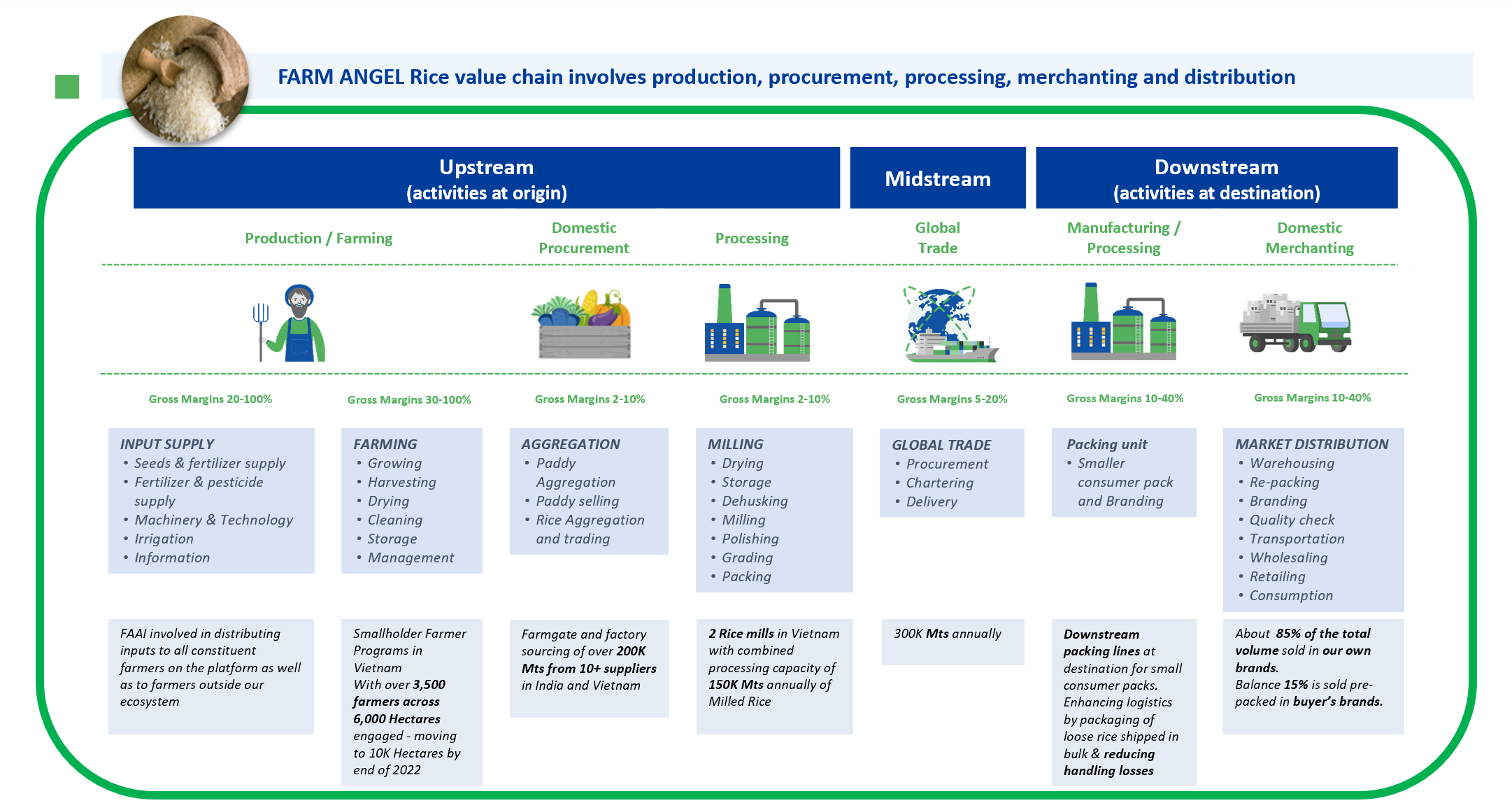Rice
Why we choose to work with rice

[fig.1 Global Rice at glance]
Rice as a Food
- Most important food crop of the developing world.
- Staple food of more than half of the world's population- 4 Billion people.
- Rich in nutrients and vitamins and minerals, it an excellent source of complex carbohydrates.
- In Africa, rice is the fastest growing staple and it is also growing in popularity in Latin America and the Caribbean.
- As Africa urbanizes, per capita consumption will increase significantly from current 30 kgs to almost 80 kg in 30 years
- Add doubling of population to that mix, and you have a hyper growth segment.
- Rice is a convenience food in Africa as it can be cooked in 15 minutes right out of the purchased bag. Local foods take over an hour to prepare and cook, in some cases over 2 hours.
- As women join the workforce, they don’t want to spend hours in the kitchen
- Farm Angel is disintermediating the value chain for rice by bringing safe food directly from farmers to consumers in the Philippines, Ghana, Ivory Coast, Mozambique, and Vietnam currently; with plans to enter 15 more countries in Western Africa over the next 2 years
Rice as a Plant
- Type of grass (genus Oryza) - belongs to a family of plants that includes other cereals such as wheat & corn.
- Grown across the world, and there are many rice varieties and different ways of cultivating them.
- All rice plants share common features and go through 3 main stages of growth – vegetative, reproductive, and ripening – before the seed can be harvested.
- Although, there are multiple varieties, rice is primarily divided into two broad categories basis characteristics
- Indica Rice - is long-grained, has a bite when eaten and generally non-sticky
- Japonica Rice - is short-grained, soft when cooked and sticky
- Medium Grain Rice - is medium in length (in between Indica and Japonica), tender and chewy when cooked
- Farm Angel is primarily working with Indica rice varieties
- Seed is the foundation of any rice crop. Sowing good quality seeds leads to lower seed rate, better germination (>70%), more uniformity, less replanting, and vigorous early growth which helps to increase resistance to insects and diseases, and decrease weeds. As a result of the right choices made by our advisory, yield can increase by 5−20%.
- We also advise and execute the appropriate and customized Crop Calendars and Land preparation services for our farmers.
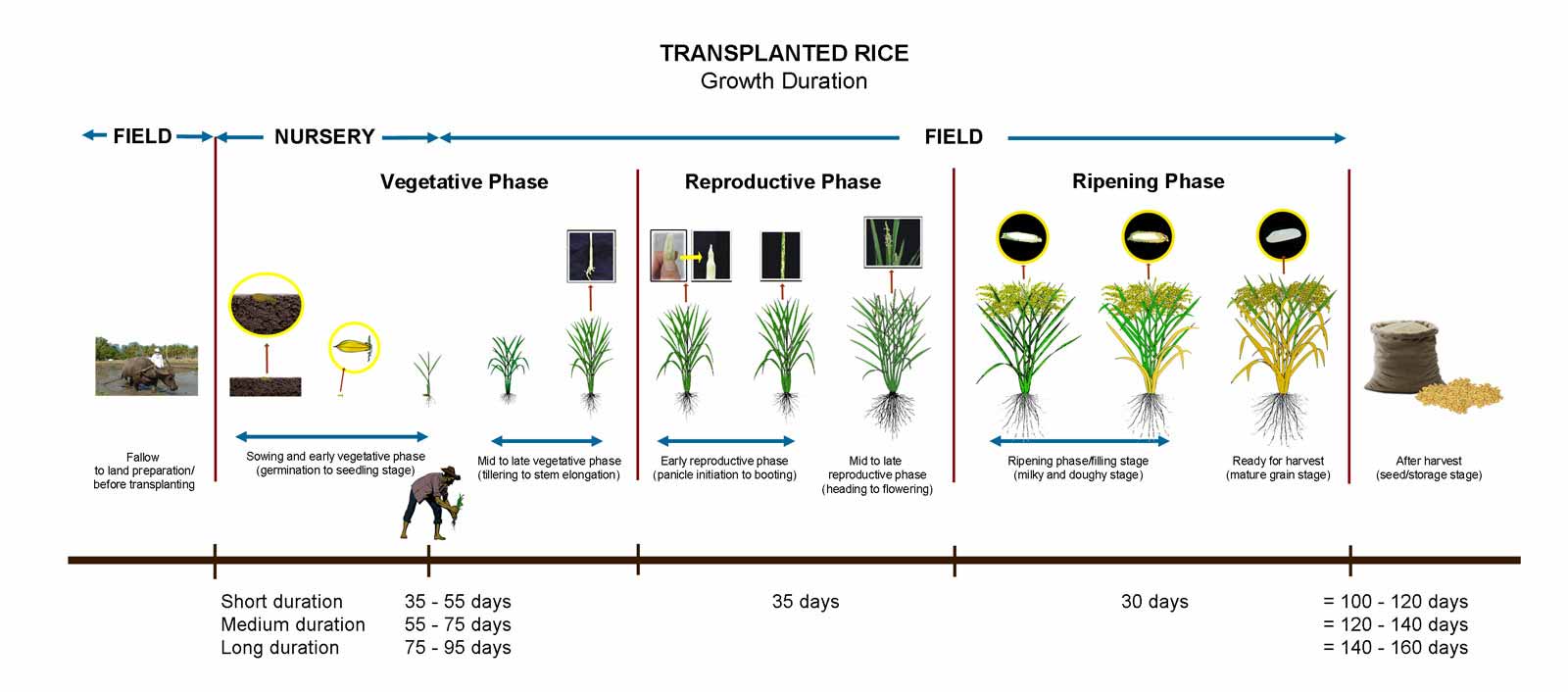
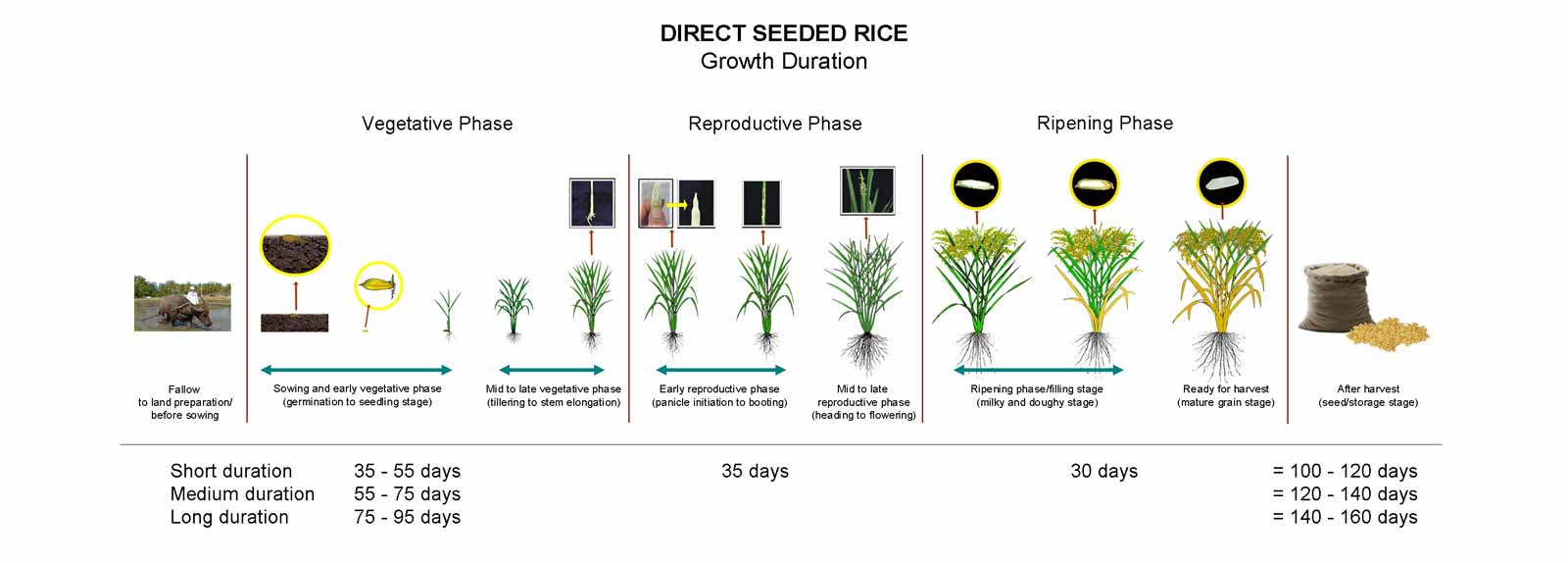
[P.C. www.knowledgebank.irri.org]
Rice as a Crop
- Most important human food crop in the world.
- Has fed more people over a longer time than has any other crop.
- Unique because it can grow in wet environments that other crops cannot survive in. Such wet environments are abundant across Asia.
- The domestication ranks as one of the most important developments in history and now thousands of rice varieties are cultivated on every continent except Antarctica.
- Farm Angel Farm advisory and Services enable our farmers to manage their water in a much better manner that ensures lower costs and GHG emissions.
- Our Harvesting assistance includes designing the best harvest times possible to take advantage of market prices, maximize grain yield, and minimize grain damage and quality deterioration.
Rice as a Commodity
- Cultivating rice is the source of income for millions of households around the globe.
- Grown in more than a hundred countries, with a total harvested area of approximately 158 million hectares, producing more than 700 million tons annually (470 million tons of milled rice).
- Several countries of Asia are highly dependent on it as a source of foreign exchange earnings and government revenue.
- Farm Angel interventions start with advising farmers on what varieties to grow that can provide LIVING INCOMES to them.
- We take care of the full lifecycle of the crop from a seed to a small consumable SKU.
- Our services to businesses involve sourcing, drying, processing, packing, shipping, and shelf displays – everything from procurement to distribution.
- With a view to bringing the populations closer to food security and access to safe food that is sustainably grown Farm Angel is building capacity for processing, storage and multiple SKU packaging in African countries that face a perennial demand and supply gap.
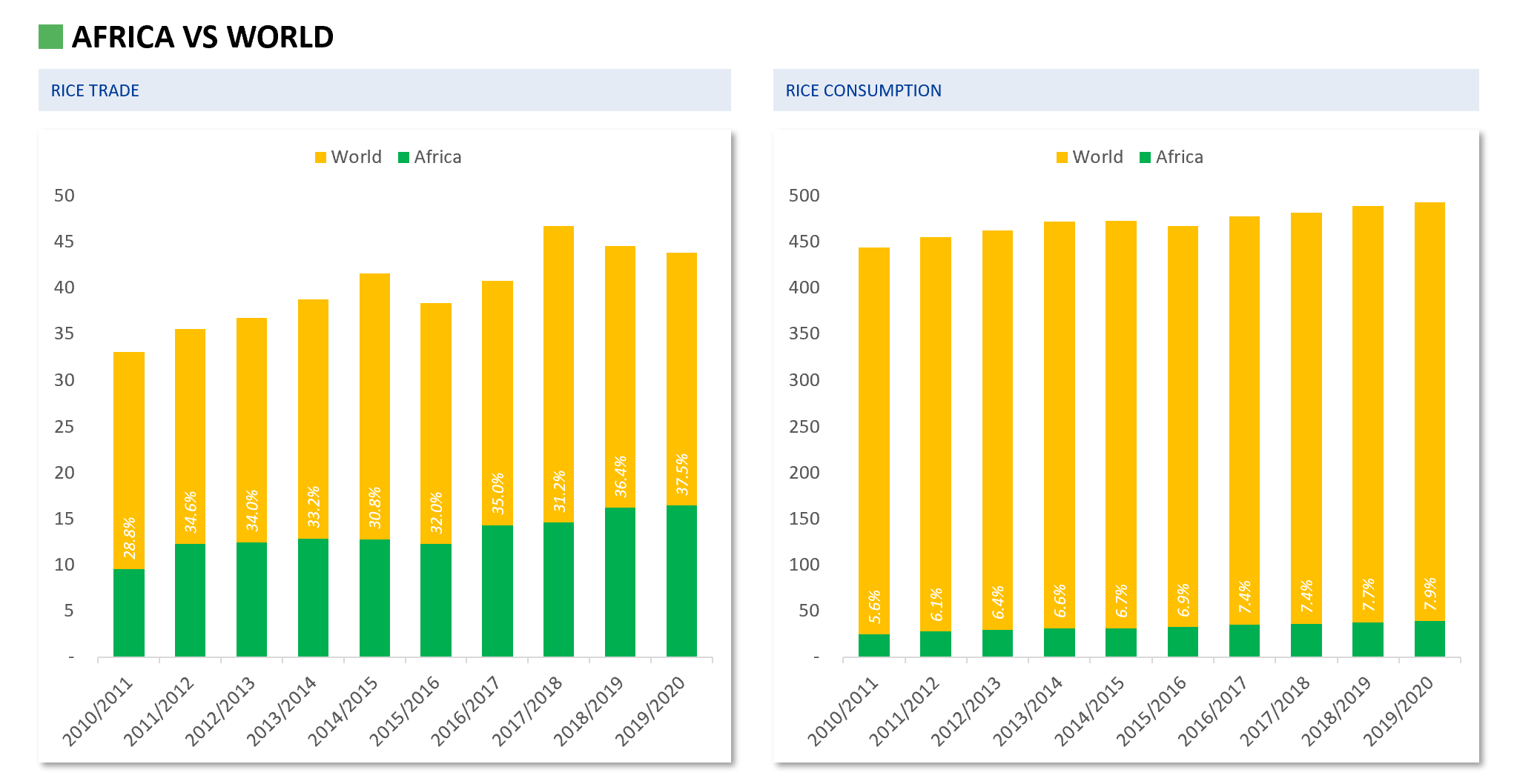
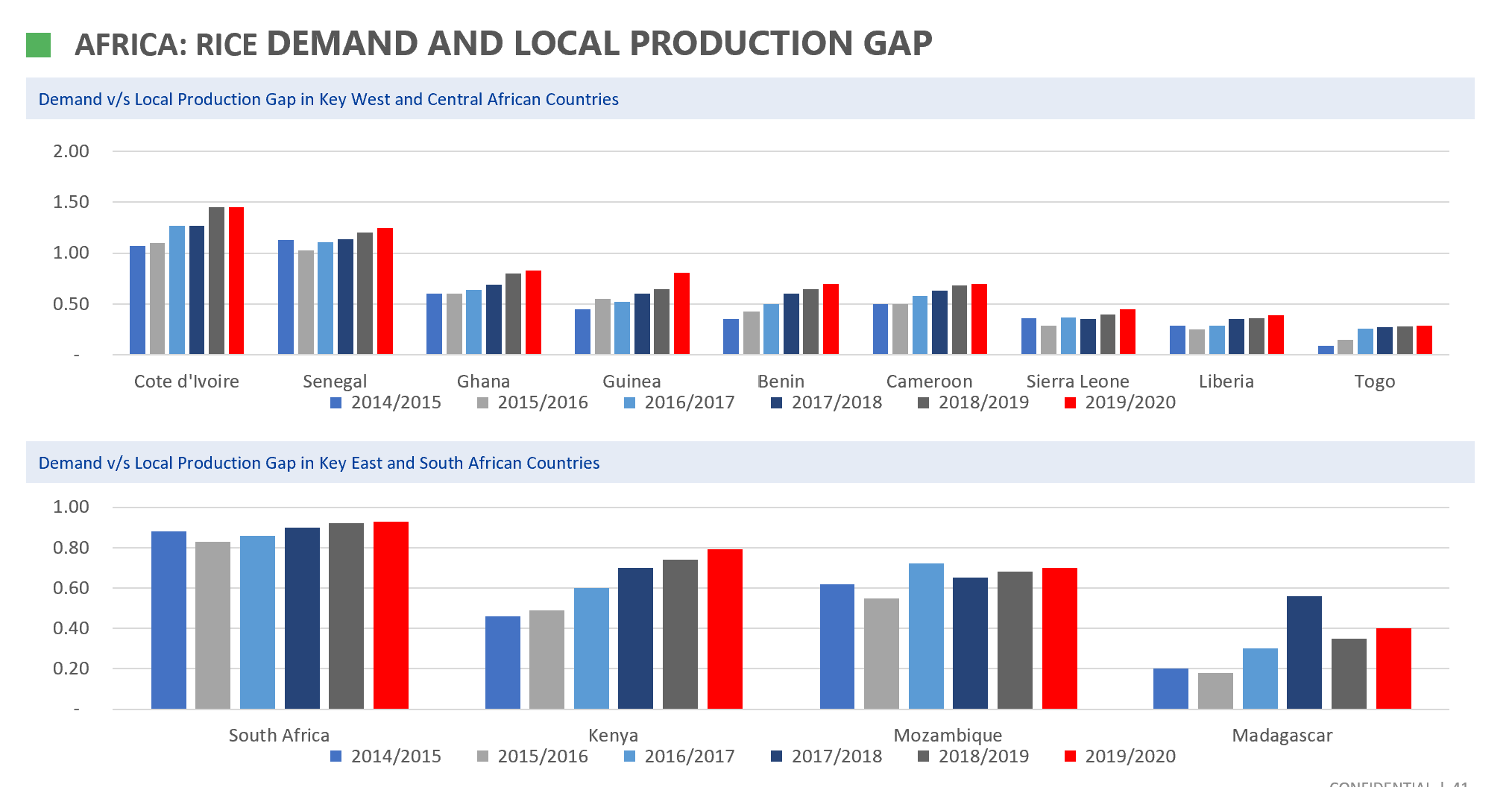
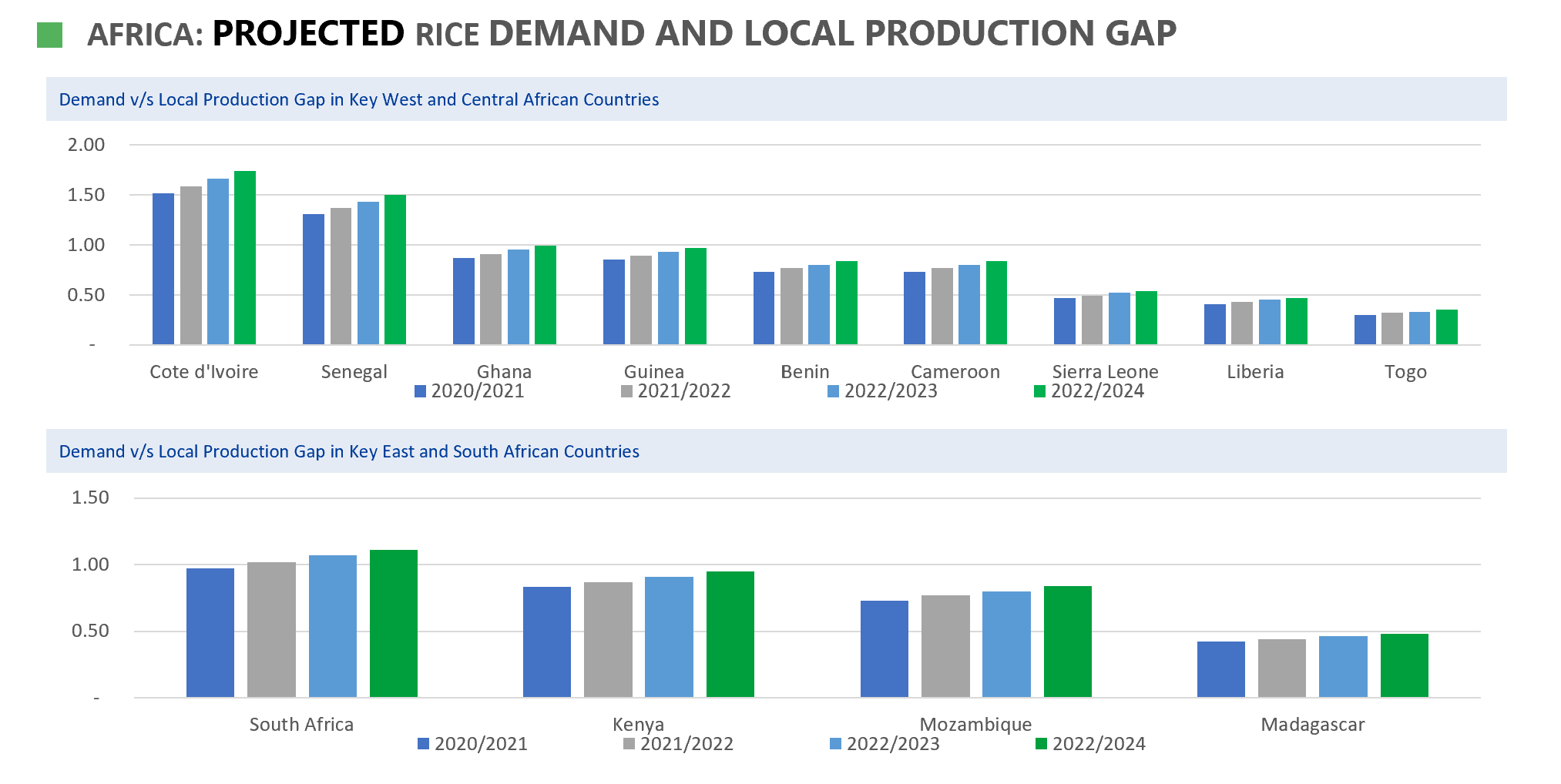
[Million Metric Tonnes][Source : USDA]
FARM ANGEL Rice value chain
